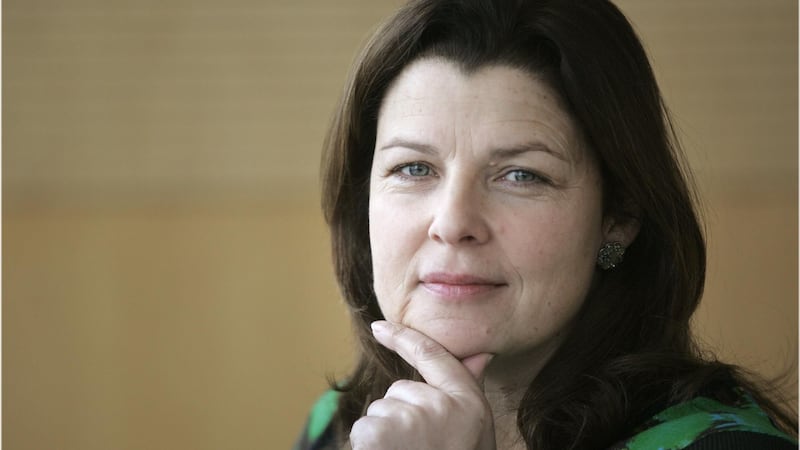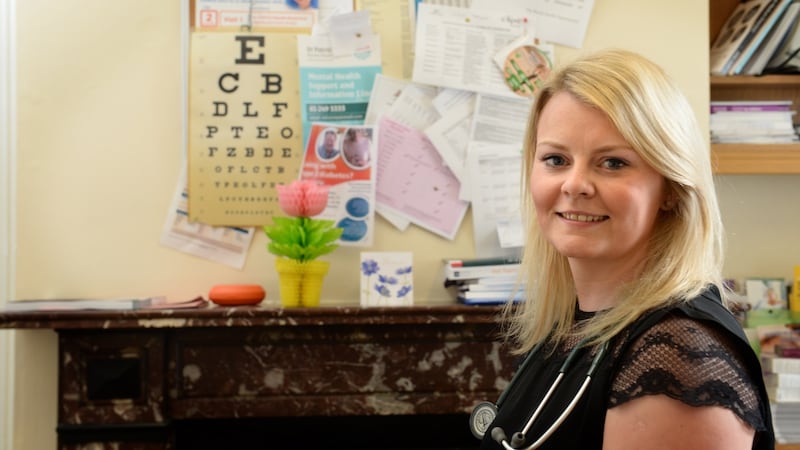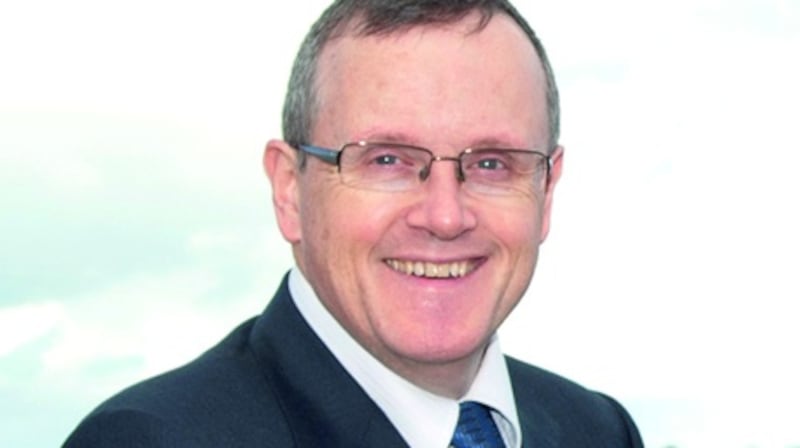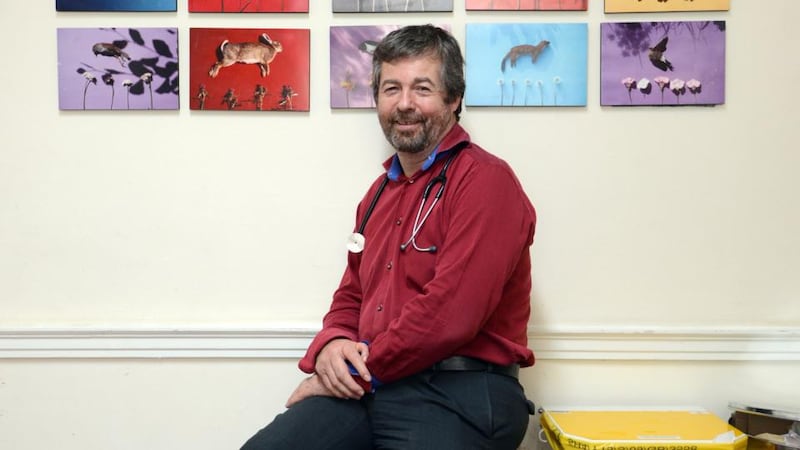I'm not just a GP. I'm your specialist in life.
This is the tag line from a powerful public awareness campaign by the Royal Australian College of General Practitioners. It was designed to help GPs raise awareness of the value of general practice and the importance of GP training and education.
The GP is not just a GP. He or she is also a counsellor, an advocate and life-long confidante who cares for their patients during some of the most vulnerable times of their lives.
GPs are in it for the long haul, with many caring for patients from the cradle to the grave.
In February 2015, former GP then minister for health and now Taoiseach, Leo Varadkar, signed a memorandum of understanding with the Irish Medical Organisation signalling the beginning of negotiations for a new GP contract.
Two years on and the negotiations are ongoing. A new contract cannot come soon enough for GPs in Ireland, many of whom are struggling to care for patients under the terms of an outdated contract that was first negotiated almost half a century ago.
GPs are for the most part self-employed professionals who care for both public and private patients in the same surgery. Private patients pay a fee and public patients (those with a medical or doctor visit card) are cared for under the terms of the General Medical Services (GMS) contract between GPs and the government.
When the GMS contract was introduced in 1972, GPs were paid on an “item of service” basis. This was subsequently changed in the 1980s to a capitation system. A GMS pension was also introduced.
Apart from a number of add-ons, the GMS contract has remained largely similar since. The same cannot be said for general practice, which has been completely transformed over the past 45 years.
The GMS contract is essentially an acute care contact designed to reflect general practice 40 years ago when patients presented with an acute illness, injury or infection. It in no way reflects general practice in 2017 where GPs are caring for increasing numbers of patients on multiple medications for a number of chronic conditions.
The GMS contract was drawn up before the era of preventative care and long before successive government policies promoted transferring care from hospitals to the more cost-effective setting of primary care. While this transfer of care is welcomed by GPs, who are more than qualified to provide it, it has not as yet, been followed by the appropriate resources.
The Financial Emergency Measures in the Public Interest (Fempi) legislation resulted in a 38 per cent cut to GP fees across the board. These cuts have had a significant negative impact on the speciality.
There is a shortage of GPs and a large number are due to retire shortly.
Tellingly, for the first time a number of GP training places remained unfilled in the 2017 intake. The shortage also means it is getting increasingly difficult and almost impossible in some areas of the country for GPs to find locums for holiday cover.
GPs are leaving to work in Canada, Australia or the Middle East where the financial rewards are greater.
Until recently patients could get a same-day appointment with a named GP, however increasing pressures means this is now under threat, with patients in some parts of the country reportedly waiting a number of days.
GPs are being asked to do more for less and the cracks are beginning to show.
The Irish Times asked a number of GPs around the country to record one full day in their practice earlier this month.
Mary Favier

“The petrol tank is empty. It is starting to splutter and come to a halt”
Dr Mary Favier has been working as a GP in Cork for 27 years.
Dr Favier started work at 8.30am and used the time before her first appointment at 9.15am to catch up on paperwork. This included filling out forms for a carer’s allowance and medical card applications. The large amount of paperwork GPs are required to do was something all the doctors interviewed for this piece reported as becoming increasingly time consuming. She also reviewed blood results, received phones call from a pharmacy and a nursing home, dealt with an emergency where an injured patient needed to be referred to the urgent care centre, filled out prescriptions and reviewed a medico-legal report.
She then started her morning surgery.
Her first case was an antenatal check up; she then saw a patient complaining of sweats and weight loss and arranged an outpatient referral. Her next patients included cases of varicose veins, sciatica, rash, hay fever, chicken pox, and a child with tummy pain. She also saw a patient with diabetes who needed to be fitted with a blood pressure monitor, and a number of patients who were suffering with mental health problems such as depression, anxiety and severe stress.
At 1pm, Dr Favier spent two hours doing more paper work, including hospital referrals, prescriptions and a housing support letter for one of her patients at risk of becoming homeless.
At 2.30pm, Dr Favier had a sandwich at her desk while she dealt with emails and reviewed more blood results.
At 3pm, the afternoon surgery included cases of conjunctivitis, a check-up for a new mother and her six-week-old baby, an elderly diabetic who had recently suffered falls and also needed bereavement support, a dental abscess, women’s health, a patient who had suffered periods of unconsciousness, another who was suffering with anxiety and depression; a patient with chest pains, another with fertility issues and an elderly patient who required a referral to the local falls clinic.
At the end of the day’s surgery, Dr Favier returned phone calls to patients, dictated three letters and filled out more prescriptions. She finished work at 6.35pm and admitted that she had not managed to clear all the day’s paper work.
For Dr Favier this was “a pretty standard day”.
“I have no issue working hard, my problem is once I am done and going home at 7pm I can’t do anything else. My head is just blown . . . it spills over for another two or three hours in the evening when your head isn’t right yet because it is too intense. It is not realistic to keep going at that pace but unfortunately that is what it is these days, Dr Favier says.
The responsibility of having to care for more and more patients with complex chronic conditions, increasing patient expectations, and reduced fees, means GPs like Dr Favier are constantly being asked to do more for less.
While she loves general practice and couldn’t imagine doing anything else, she would not encourage a young doctor to enter the profession.
“There is no plan: they [the Government] have moved for free GP care for all with absolutely no sense of how that is going to be achieved.
“General practice has transformed in 30 years in terms of the complexity of what we do and I just don’t think that is either recognised or acknowledged.
“It is unsustainable to continually expand our role and what is expected of you under the current format. It needs to be structured and general practice needs lots more money.
“The GPs don’t need lots more money but general practice does. We need proper funding, we need advanced nurse practitioners and we need proper protocols.”
Dr Favier describes the pressures of a busy practice as “a constant fog” and like many of her colleagues she worries about “dropping the ball”.
“All GPs talk about it all the time, that they have a slight background anxiety that they are just running so fast that they are bound to neglect something.
"The petrol tank is empty. It is starting to splutter and come to a halt and in some places it is off the road. If something is not done you won't be able to put it back on the road."
Sinéad Cronin

“Patients’ expectations are higher than they have ever been. We live in a society where everything is instant”
Dr Sinéad Cronin is a young doctor practising in Dublin. She qualified as a GP in 2016. A year into the job, Dr Cronin says it was the variety of general practice that attracted her to the profession.
Dr Cronin started the day with a walk-in clinic. Running from 8.45am to 11am, the clinic is designed as a quick, one problem per appointment, service.
During the clinic, Dr Cronin treated a patient with tinnitus, diagnosed a new case of type 1 diabetes, provided a medical check-up for a mortgage application, reviewed a patient with chest pain, signed individuals as fit to return to work and advised two patients about family planning. She also saw a number of mental health issues such as panic disorder, anxiety and one patient who was suffering from a significant depression.
The young GP says there were a few patients that morning who “burst into tears” for reasons that were not related to their initial presentation and another who was struggling and needed support following a recent bereavement.
Dr Cronin typically does consultations relating to women’s health in the afternoon and that day included reviewing a patient in whom she had recently fitted a Mirena Coil.
She saw allergies, a urinary infection, and spent some time with a patient who was recently discharged from hospital who was confused about their discharge prescription. This involved phone calls back to forth to the hospital and the pharmacy. She also saw an elderly patient with memory difficulties.
Throughout the day, Dr Cronin filled out a number of forms including an application for disabled parking and two travel companion forms. She also interpreted 86 blood results; which included communicating results to patients, dealt with the day’s post and made and took seven phone calls relating to patient care.
Dr Cronin says she loves her job as a GP, however she adds it is “probably more difficult than I ever really gave it credit for”.
“We are expected to do more and more with less and less. And I think patients’ expectations are higher than they have ever been. We live in a society where everything is instant and when you have to explain to somebody who hasn’t got health insurance – look, you are going to be waiting nine months to see a gynaecologist for that fibroid – people don’t understand that, because it is not the way they operate.
“I don’t apologise for the system that we work in, it is what it is and I would make it better if I could. I think that part is tricky, and it is all about managing patients’ expectations,” Dr Cronin adds.
Eamonn Shanahan

“The vast majority of GPs do a very good job and the vast majority of GPs do genuinely care for their patients”
Dr Éamonn Shanahan has been a rural GP for 31 years in Farranfore, Co Kerry.
The practice has been caring for patients in the area for almost a century, as it was first established by Eamonn's grandfather in 1921. Eammon's father, Dr Richard (Dick) Shanahan, also worked as a GP in the practice from 1949 until 2003.
Dr Shanahan started his day at 8.30am with a practice meeting. He then began his morning surgery at 9am which ran until 1.30pm and during this time he saw 15 patients.
The morning surgery comprised a range of presentations and the vast majority of patients had more than one presenting complaint. These included serious mental illness, bronchitis, multiple sclerosis, osteoarthritis, diverticulitis, stress, fibromyalgia, persistent cough, asthma, overactive bladder, rheumatoid arthritis and chronic heart failure. He also saw a patient who was struggling following the death of a spouse and another who was suffering with chronic depression.
After a 20 minutes for lunch, he spent the rest of break between clinics on paperwork and phone calls before afternoon surgery commenced at 3pm.
He saw nine patients in the afternoon, which included cases of ulcerative colitis, work-related stress, epilepsy, a fracture and chronic asthma. The Kerry GP saw his last patient at 6.10pm. Between 6.10pm and 8.30pm Dr Shanahan dealt with the post, reviewed lab results, made a number of phone calls and completed some additional paper work.
According to Dr Shanahan, over the past 30 years his working day has changed from one where he saw minor episodic illnesses and infectious diseases to a significant emphasis on the management of chronic medical conditions such as ischaemic heart disease, diabetes, chronic bronchitis and renal failure.
“It is the rare consultation that I will see a person with a single problem. Typically people will have two or three problems when they come,” he says.
Dr Shanahan is a member of the Council of the Royal College of General Practitioners (RCGP) in the UK representing the Irish faculty. Speaking in a personal capacity, he said the GMS contract was “grossly unfit for purpose” and he fears that Irish general practice will go the way of the profession in the UK; the fabric of which he says is currently “unravelling”.
“I can easily see the same thing happening here. Rural practice, inner-city practice is where you are going to see the strains first, there is going to be increasingly large tracts of the country where it will not be possible to easily see a general practitioner.”
Without the provision of a new fit for purpose, chronic disease-focused contract, Dr Shanahan suggested general practice in Ireland would have a life expectancy of approximately five years. This he said was due to fact that a significant number of older GPs were due to retire in the coming years and there was a lack of younger doctors to replace them.
“The vast majority of GPs do a very good job and the vast majority of GPs do genuinely care for their patients . . . they have a life-long relationship and they really will go the extra mile to do the best they can for their patients in the majority of cases and I believe that applies right across the country . . . the problem is that if we are not there then the relationship can’t exist.”
Mark Murphy
“The main challenge is not being able to provide the appropriate chronic care that patients deserve” Dr Mark Murphy qualified as a GP in 2012 and works as a salaried assistant GP in Dún Laoghaire, Co Dublin.
Dr Murphy’s day in general practice started at 8.30am with a visit to a local nursing home where he saw 16 patients. After completing the required paper work, he returned to the practice at 11am where he saw another 10 patients.
He then did a house call to see a patient with a mental health difficulty who was acutely unwell, and called to another nursing home.
Before afternoon surgery, Dr Murphy ate a sandwich at his desk as he wrote prescriptions, reviewed blood and radiology reports and dealt with the post.
In the afternoon, he saw approximately 16 patients from 3pm to 6pm and he left the surgery at 7.10pm after completing more paperwork.
Dr Murphy says the most enjoyable part of the day is the face-to-face consultations with patients and this takes up approximately 60 per cent of his workload.
Throughout the day, he cared for a variety of patients, from an infant of two months, to children under 6, adolescents and those aged over 70.
“There is huge variety and that is what makes it so rewarding but it is a very busy day.”
Dr Murphy says it is a challenge reconciling the limited GP contract with the needs of patients with multiple chronic conditions.
Outlining the greatest challenges he experiences as a GP in Ireland today, Dr Murphy says the first is not being able to provide the appropriate chronic care that patients deserve and the second was what he described as the “wholesale inequality” in the healthcare system.
“Only a few patients need to be referred to secondary care but when they are referred the first question a GP has to ask them is do you have health insurance or not? That it is a terrible indictment of our healthcare system, when a person’s financial means very much affects their ability to access health care and definitely affects their outcomes. So I think the differential access to secondary care is very unequal and that is a major challenge to GPs because I don’t think we want to work in an unfair or unequal system.”
Austin O’Carroll

“All the evidence shows that there is not enough doctors in areas of deprivation and isolated rural areas”
Dr Austin O’Carroll has been working as a GP in inner-city Dublin since 1992.
He started his day at 7.30am with a visit to a homeless hostel to see a number of patients. He then returned to his practice in Dublin 7 to commence his morning surgery. He finished work at 6pm with 15 minutes for lunch which he had while doing paperwork and in total saw approximately 40 patients.
According to Dr O’Carroll, while general practice has always been a busy job he has noticed an increase in the amount of preventative care provided by GPs. He also estimates that up to 6 per cent of patient consultations is taken up with filling out social welfare forms and writing letters for housing or clothing benefits, part of which is not covered by the GMS contract.
As a GP in an area of high deprivation, Dr O’Carroll cares for a population with a very high burden of illness: these include those with chronic conditions such as COPD, HIV and Hepatitis. For example on the day he recorded, Dr O’Carroll saw between three and four people with HIV and the same number again with hepatitis.
That would be very unusual in any other practice but a daily occurrence for us, he says.
According to Dr O’Carroll, research has shown that the more GPs a country has per head of population, the higher the life expectancy and the lower the cost to the health care system.
“If you lose general practice people will die younger and you will have a more expensive health service, so it is critical.
“I think we are in facing a crisis in general practice because we are not producing enough general practitioners, and the older GPs are working harder and getting more stressed. I definitely am working longer and harder than I did when I started and I know several doctors who have retired early.”
Dr O’Carroll said there was a need to train more GPs and find ways to retain them in the service. He also says the specialty needs more resources to deal with chronic care. “That is not into the pockets of general practitioners – more in terms of prescribing nurses, salaried GPs. All the evidence shows that there is not enough doctors in areas of deprivation and isolated rural areas and we need to concentrate resources in those areas because both have social deprivation problems – people who are probably more in need of a doctor because they are unhealthier, yet they are less likely to access a doctor because there are just less doctors in their area.”

















